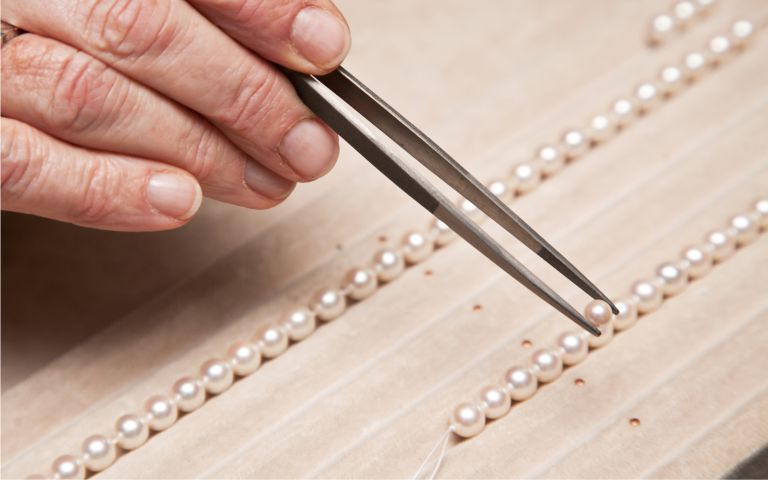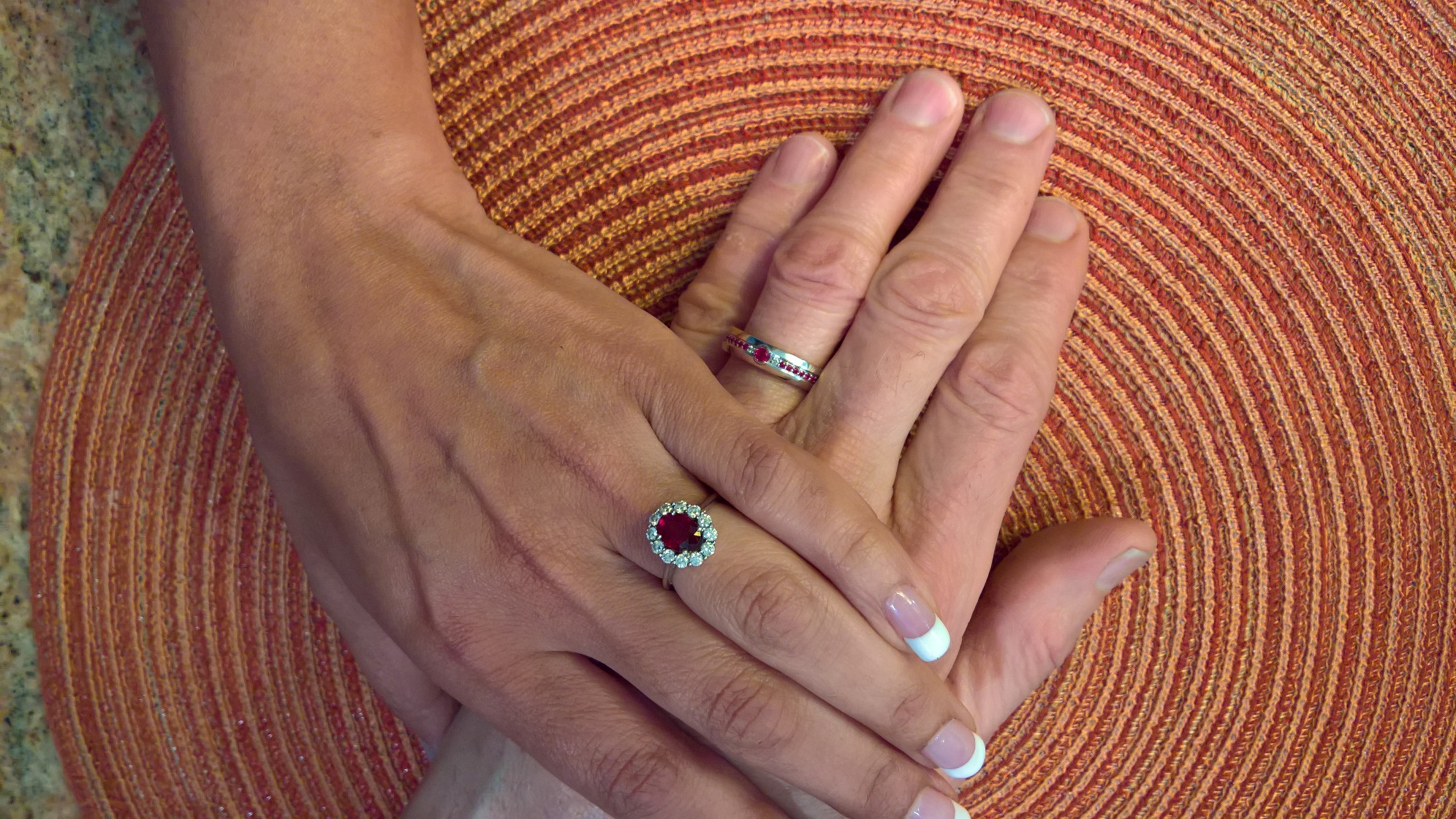
Selecting Pearls
Selecting Pearls
Pearls are classified by origin and then graded by size, shape, nacre thickness, color, luster, and surface clarity. These qualities are not considered to be of equal importance when arriving at the final grade. When selecting pearls, be familiar with the Five Virtues of pearls to assist you in selecting your ideal pearl. However, the most important thing to remember when selecting a pearl is that “beauty is in the eye of the beholder.”

Luster
For cultured pearl experts, luster is the single most important indicator in evaluating pearl quality. Luster is what separates the superior from the inferior and the extraordinary from the ordinary. Throughout history, this unique attribute has separated pearls from all other gems. Luster describes the beauty you see as light travels through the nacre of the pearl. Luster derives from the pearl’s countless layers of pearl nacre, the natural pearly substance that forms the body of the pearl itself. It is the nacre of the pearl that causes light to refract from the depths of the nacreous layers through minute prisms, giving each pearl its unique lustrous appearance. Stuller only supplies pearls of excellent luster, due to the quality and thickness of the nacre. Importantly, the luster of these pearls is natural and untreated, and their beauty will not diminish over time if cared for properly.
Complexion
Pearls may have surface characteristics, which may or may not detract from the pearl’s beauty depending on the quality, depth, or visibility of the blemishes. Pearl nacre is a beautiful matrix of calcium carbonate crystal laid on tile-like formation by the oyster. The appearance of the nacre is determined by several factors including whether the calcium crystals are flat or prismatic, the perfection with which the tiles are laid, and the fineness and number of tiles. When the tiles are laid in a perfectly uniform pattern the nacre will appear identical over the entire pearl surface, thus creating the flawless pearl.
Nature is not normally flawless and some tiles may be imperfectly laid. This results in surface blemishes and imperfections beneath the nacre’s surface. The effect on the pearl’s beauty depends on the degree of visibility of these imperfections. This is described as the pearl’s complexion.
Surface complexion quality refers specifically to the abundance or absence of physical blemishes or marks. When evaluating complexion (the trade uses terms such as blemish, spotting, and cleanliness), remember that cultured pearls are grown by live oysters in a natural environment. As such, there are many uncontrollable forces that affect the surface.
Size
Cultured pearls are measured by their diameter in millimeters. They can be smaller than one millimeter in the case of tiny seed pearls or as large as twenty millimeters for a mature South Sea pearl. The larger the pearl, other factors being equal, the more valuable it will be.

Shape
Classic shapes range in descending order of value from round to near-round, and from oval to drop. More contemporary shapes include circlé and baroque. Popularity of certain shapes or the rarity of others can result in a premium price for particular shapes. It’s important to understand that in pearl industry terms, the shapes from round to drop are pretty symmetrical, while anything baroque denotes a pearl that is completely asymmetrical or freeform. These unusual shapes usually occur in Japanese cultured pearls as well as Tahitian, S outh Sea, and freshwater pearls.
The photographs of the shapes shown are representative samples of the various shapes and qualities available. As a product of nature, each pearl is rare and unique. The pearls you purchase may not look exactly like the images shown.

Color
Cultured pearls come in a variety of colors from rosé to black. The desirability of different pearl colors is a matter of individual taste. The most popular color is white or white with slight overtones. Pearls that are naturally colored, rather than color enhanced by artificial means, will add value to the pearl. Most South Sea cultured pearls offered by Stuller have natural color and luster and are not enhanced.












